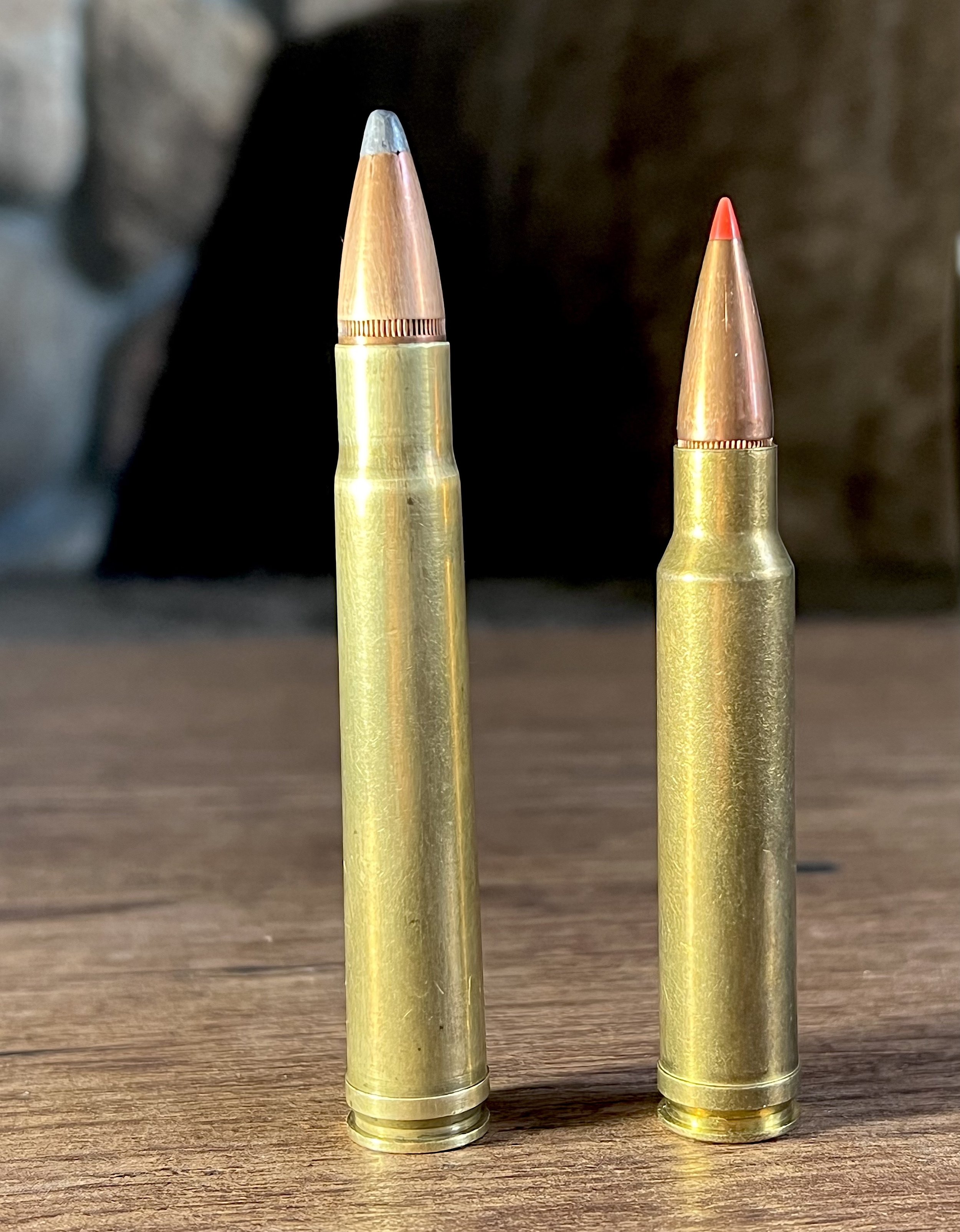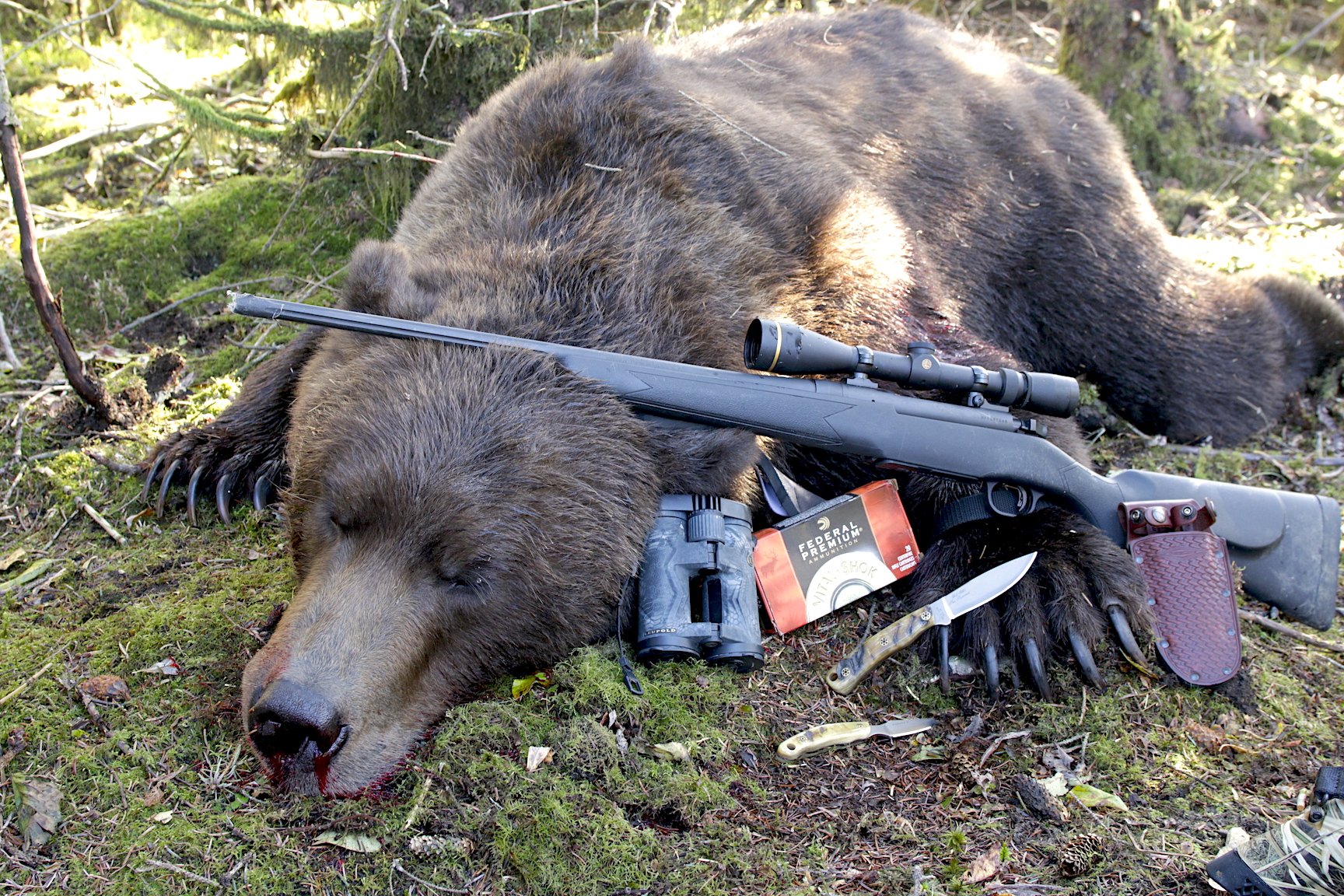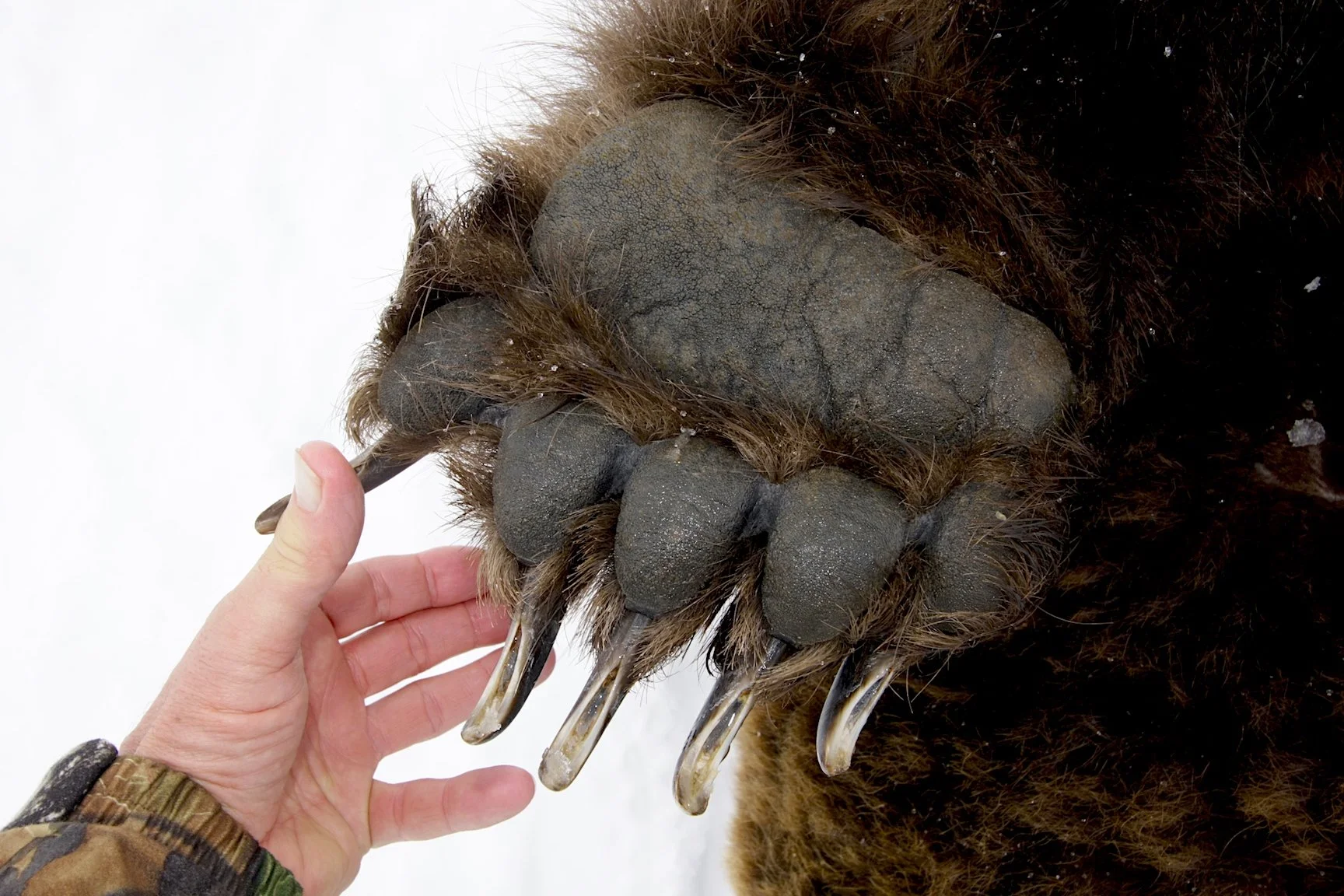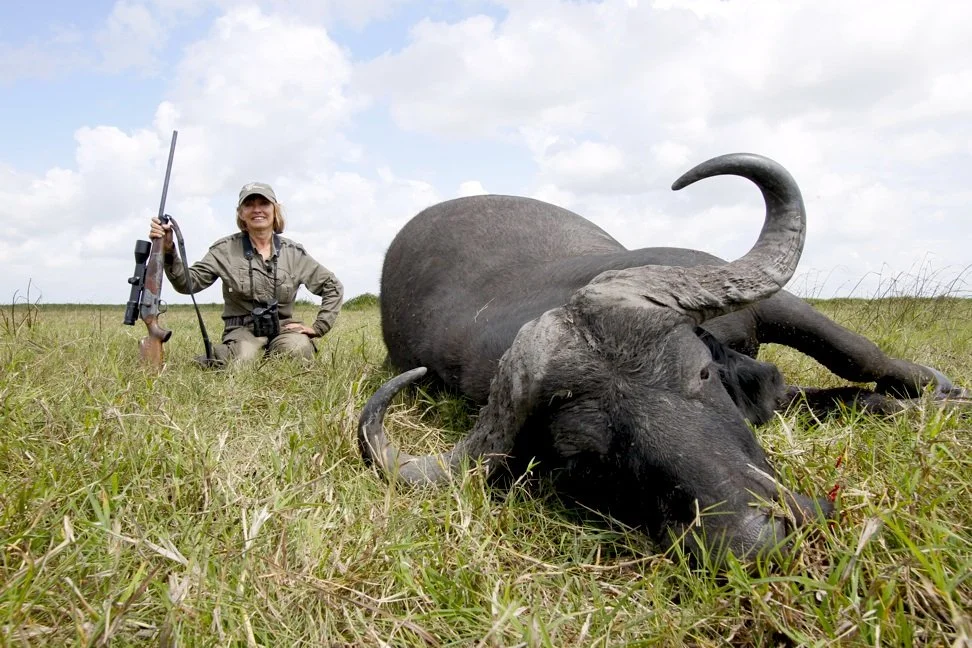Is 338 Win Mag the New 375 H&H Magnum?
Three years ago I posted a report (you can read that blog here: https://www.ronspomeroutdoors.com/blog/375-hh-magnum-overrated) on my mixed successes with the venerated 375 H&H Magnum cartridge. It created, if not a firestorm, at least a small conflagration, as the comment section shows.
I knew this would happen because the 375 H&H is beloved, even worshipped, as the ultimate, anchor-them-right-there, do-it-all, universal cartridge. But the little 338 Winchester Magnum might be as good, maybe better if it means you can better handle the recoil or wish to engage game at longer distances. Of course, winning requires just the right selection of bullet and muzzle velocity, too, as this video suggests.
Yikes. I smell smoke already. But before I begin feeling the heat from all you 375 H&H lovers, allow me to close the damper and maybe spray a bit of cooling waters on the inevitable fire my 375/338 comparison will ignite. I’ll do it — with your patience, indulgence and open mind — with an objective investigation of the physical realities of ballistics. In other words, minus personal observations and subjective biases.
First, let me assure you I believe you and all other hunters who tell me every animal you’ve ever shot, from cottontails to blue whales, dropped (or sank) on the spot with a single hit from your 375 H&H. They haven’t made this the entry level cartridge for dangerous game hunting in many African countries for no good reason. But bureaucratic edicts aside, I want to dissect the 375 H&H alongside the smaller 338 Win. Mag. to see what each does because many Alaskans say the 338 Win. Mag. is the better option in grizzly country. But is it?
One shot from his 338 Win. Mag. Mossberg Patriot was all my buddy Tom needed to terminate this brown bear. Could a 375 H&H done any better? I believe the bullet was Nosler Partition, 225-grain.
The 338 Win. Mag., as you probably know, is an offspring of the 375 H&H. Same basic, belted magnum case. Winchester in 1958 just shortened that case so it would fit in standard length action rifles, straightened the side walls a mite, formed a 25-degree shoulder, and necked it down to hold a .338” bullet. With an average case capacity of around 86-grains of water, the 338 Win. Mag. has enough juice to push 200-grain bullets as fast as 3,000 fps from a 24” barrel, a 225-grain about 2,900 fps, and a 250-grain 2,700 fps. As a handloader your mileage might vary.
The 375 H&H throws .375” diameter bullets, typically 300-grainers about 2,500 fps. Drop down to 270 grains and velocity from a 24-inch barrel should reach 2,800 fps or so. Because we don’t have space to detail every bullet/velocity combination from both of these and because many of our best controlled expansion bullets perform best (arguably) at higher velocities, we’ll compare a 270-gr. in the 375 H&H to a 225-gr. in the 338 Win. Mag. and we’ll run homogenous (copper) hollow points in each due to their excellent weight retention and deep penetration. (Be aware that such loads might not be available in factory ammo.)
Most 270-gr. factory loads in 375 H&H claim 2,690-fps to 2,700 fps. Handloading manuals often top out at 2,800 fps. Let’s go with 2,700 fps since most of us will likely use factory ammo. In 338 we’ll go with 2,800 fps in a factory load even though handloads safely hit 2,880 fps.
We’ll also run with a high B.C. bullet in each because those retain more energy downrange. In the 375 H&H we’ll shoot a Hammer 270-gr. Shock Hammer, G1 .422. In the 338 Win. Mag. we’ll fire a Barnes 225-gr. TTSX BT, G1 B.C. .514. Sectional density of the 375 is .274, the 338 SD is .281. I doubt that will prove significant.
375 H&H Mag., 270-gr., 2,700 fps
338 Win. Mag., 225-gr., 2,800 fps
These charts show the 375 H&H enjoying a 435 f-p energy advantage over the 338 Win. Mag. That’s what 45-grains more projectile mass will do for you despite the 338’s 100 fps velocity advantage. At 100 yards the 375’s advantage is down to 280 f-p, and at 300 yards two are essentially even. But none of us is needing to stop a charging buffalo or bear at 300 yards, so the 375 H&H would seem the wiser choice for a so-called stopping rifle. However, if you were opting to carry one of these as a primary hunting rifle for caribou, moose, sheep, etc. in regions with grizzlies, the 338 offers slight drop and drift advantages — and arguably a faster recycle time due to its shorter length. Worth risking your hide for?
Would you prefer shaking hands with a brown bear’s paw after application of a 338 Win. Mag. or 375 H&H Mag? The latter die the introductions on this bear. Dakota 97 bolt-action, Swarovski Z6 scope and 300-gr. Swift A-Frame bullet. First shot paralyzed the bear, second ended it.
Why Not Heavier Bullets?
Now let’s run a 300-grain Partition in the 375 H&H against a 250-gr. Partition in the 338 Win Mag.
375 H&H, 300-gr. 2,550 fps
338 Win Mag, 250-gr., 2,700 fps
The interesting numbers here include the LOWER muzzle energy of the 300-gr. 375. This suggests we’re pushing the limits on powder capacity for this much bullet mass. The 338 Win Mag with its 250-gr. bullet picks up 129 f-p over its 225-gr. load. This enables it to nearly match the 375’s energy at 200 yards — once again we’re well beyond our emergency hammering range. Drop and drift numbers favor the 338 again, but only marginally.
The bull was near enough that drop and drift never entered our minds. Betsy dropped this buffalo with a single 300-gr. Barnes TSX from her Blaser R8 rifle, Zeiss Victory scope. Would a 338 Win Mag have done as well IF it were even legal?
So what’s the verdict? My assessment is that the 375 should be the better option, but this depends on bullet selection and launch speed. Rifle weight and recoil might factor in for some. The lighter recoil of the 338 Win Mag suggests it would be easier to control and shoot accurately in a lighter, easier handling rifle, the kind you might prefer in steep, tall mountain country. The slightly heavier punch of the 375 — and its slightly wider bullet — might make a difference on a close range defense shot.
338 Win Mag or 375 H&H Mag? Regardless which you choose, make sure you are using ammo that helps it reach its potential.
# # #









